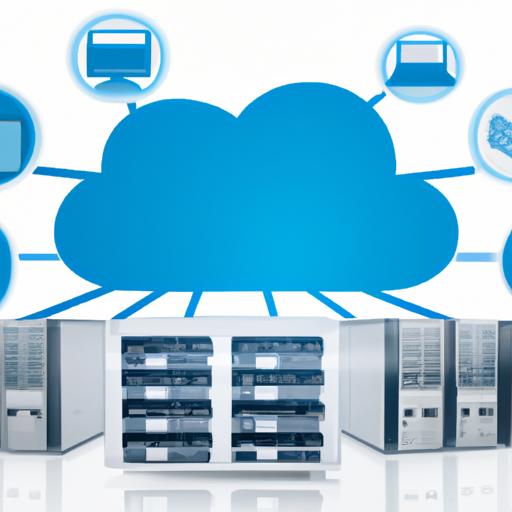Are you a business owner or IT professional looking to stay ahead of the competition in the ever-evolving world of technology? Look no further than the Gartner Magic Quadrant for Data Center and Cloud Networking.
This comprehensive report evaluates vendors in the data center and cloud networking market and places them into one of four quadrants based on their ability to execute and completeness of vision. The report is released annually and is highly regarded in the industry for its thorough analysis and insights.
But why is the Gartner Magic Quadrant so important? By utilizing this report, businesses can make informed decisions about which vendors to partner with based on their individual needs and goals. IT professionals can also rely on the report to stay up-to-date on emerging trends and technologies in the market.
Stay tuned for a deep dive into the Gartner Magic Quadrant for Data Center and Cloud Networking and what it means for your business or career in IT.
Key Players in the Data Center and Cloud Networking Market

A businessman working on the go while keeping an eye on the data center
As businesses continue to rely on data center and cloud networking solutions, it’s important to know who the major players in the market are. Here’s a breakdown of the vendors evaluated in the Gartner Magic Quadrant for Data Center and Cloud Networking:
Overview of Major Vendors
- Cisco: A well-known leader in the networking industry, offering a wide range of data center and cloud networking solutions.
- VMware: Known for its virtualization technology, VMware has expanded into the data center and cloud networking market with its NSX platform.
- Arista: A newer player in the market, Arista has gained attention for its high-performance switches and software-defined networking solutions.
- Juniper Networks: Offers a variety of data center and cloud networking solutions, including its Contrail platform for network automation and orchestration.
- HPE (Aruba): Acquired Aruba Networks to expand its offerings in the wireless networking market, and has since expanded into data center and cloud networking.
Analysis of Strengths and Weaknesses
Each vendor evaluated in the Gartner Magic Quadrant has its strengths and weaknesses. For example, Cisco offers a wide range of solutions but may not be as agile as some of its competitors. VMware’s NSX platform is highly regarded for its virtualization capabilities, but may not be the best fit for businesses with complex networking needs.
By understanding each vendor’s strengths and weaknesses, businesses can make informed decisions about which solutions will best fit their unique needs and goals.
Understanding the Gartner Magic Quadrant

A complex cloud networking setup that keeps businesses running smoothly
The Gartner Magic Quadrant for Data Center and Cloud Networking is a powerful tool for businesses and IT professionals, but understanding its criteria and methodology is crucial to interpreting its findings.
The Four Quadrants and Their Significance
The Magic Quadrant evaluates vendors based on their ability to execute and completeness of vision, placing them into one of four quadrants: Leaders, Challengers, Visionaries, and Niche Players.
Leaders are considered the most capable and well-rounded vendors, with a proven track record of delivering high-quality products and services. Challengers are strong players in the market but may lack a complete vision for the future. Visionaries have a clear vision for the future but may not yet have the execution capabilities of Leaders or Challengers. Niche Players have a specialized focus and may not have the execution capabilities or complete vision of the other quadrants.
Criteria and Methodology Used by Gartner
Gartner evaluates vendors based on a variety of criteria, including product or service, overall viability, sales execution and pricing, market responsiveness and track record, marketing execution, customer experience, and operations. The methodology involves a rigorous process of data collection, analysis, and consultation with clients and industry experts.
By understanding the four quadrants and the criteria and methodology used by Gartner, businesses and IT professionals can make more informed decisions about which vendors to partner with and gain valuable insights into the state of the data center and cloud networking market.
Benefits and Risks of Using the Gartner Magic Quadrant

A network engineer setting up a data center network for optimal performance
As with any report or evaluation, there are both benefits and risks to relying on the Gartner Magic Quadrant for Data Center and Cloud Networking.
Advantages of relying on the Magic Quadrant for vendor selection
One of the significant advantages of using the Magic Quadrant is that it provides a comprehensive analysis of vendors in the market. By using this report, businesses can easily compare and contrast vendors based on their individual needs and goals. The report also provides insights into emerging trends and technologies in the market, allowing businesses to stay ahead of the competition.
Another advantage is that the report is updated annually, ensuring that the information provided is current and relevant. This makes it easier for businesses to make informed decisions about which vendors to partner with based on the most up-to-date information available.
Potential risks and limitations of the report
While the Gartner Magic Quadrant is highly regarded in the industry, it is essential to note that it is not a one-size-fits-all solution. The report is based on Gartner’s criteria and methodology, which may not align with a specific business’s needs or goals. It is crucial to consider the report as a starting point for research rather than the be-all and end-all solution.
Another potential risk is that vendors can sometimes manipulate the results of the report by focusing on meeting specific criteria rather than delivering on their promises. It is essential to take the time to research individual vendors beyond the report to ensure that they are the right fit for your business.
In conclusion, the Gartner Magic Quadrant for Data Center and Cloud Networking provides valuable insights and analysis for businesses and IT professionals looking to make informed decisions about vendor selection. However, it is essential to consider the potential risks and limitations of the report before making any final decisions.
Conclusion
In conclusion, the Gartner Magic Quadrant for Data Center and Cloud Networking is a crucial resource for businesses and IT professionals looking to stay ahead of the curve in the industry. Understanding the four quadrants and the criteria used by Gartner to evaluate vendors can help businesses make informed decisions about which vendors to partner with based on their specific needs and goals.
However, it’s important to note that the Magic Quadrant is not the end-all-be-all in vendor selection. It’s important to consider additional factors such as customer reviews, industry reputation, and pricing before making a final decision.
Overall, the Gartner Magic Quadrant for Data Center and Cloud Networking provides valuable insights and analysis that can help businesses and IT professionals navigate the ever-evolving landscape of technology. By staying up-to-date on emerging trends and technologies, businesses can stay ahead of the competition and achieve their goals.